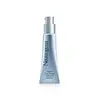What's inside
What's inside
 Key Ingredients
Key Ingredients

 Benefits
Benefits

 Concerns
Concerns

 Ingredients Side-by-side
Ingredients Side-by-side

Water
Skin ConditioningDimethicone
EmollientAluminum Starch Octenylsuccinate
AbsorbentDimethicone Crosspolymer
Emulsion StabilisingAmmonium Acryloyldimethyltaurate/Vp Copolymer
Trisiloxane
Skin ConditioningNylon-12
C12-15 Alkyl Benzoate
AntimicrobialAscorbyl Glucoside
AntioxidantGlycerin
HumectantMica
Cosmetic ColorantCaprylyl Glycol
EmollientTitanium Dioxide
Cosmetic ColorantPolyacrylamide
Xanthan Gum
EmulsifyingC13-14 Isoparaffin
EmollientSodium Hyaluronate
HumectantSodium Lactate
BufferingHydrolyzed Myrtus Communis Leaf Extract
Skin ProtectingSodium Hydroxide
BufferingBHT
AntioxidantDisodium EDTA
Polysorbate 20
EmulsifyingSodium PCA
HumectantLaureth-7
EmulsifyingRetinol
Skin ConditioningSorbitol
HumectantProline
Skin ConditioningHinokitiol
Parfum
MaskingWater, Dimethicone, Aluminum Starch Octenylsuccinate, Dimethicone Crosspolymer, Ammonium Acryloyldimethyltaurate/Vp Copolymer, Trisiloxane, Nylon-12, C12-15 Alkyl Benzoate, Ascorbyl Glucoside, Glycerin, Mica, Caprylyl Glycol, Titanium Dioxide, Polyacrylamide, Xanthan Gum, C13-14 Isoparaffin, Sodium Hyaluronate, Sodium Lactate, Hydrolyzed Myrtus Communis Leaf Extract, Sodium Hydroxide, BHT, Disodium EDTA, Polysorbate 20, Sodium PCA, Laureth-7, Retinol, Sorbitol, Proline, Hinokitiol, Parfum
 Reviews
Reviews

Ingredients Explained
These ingredients are found in both products.
Ingredients higher up in an ingredient list are typically present in a larger amount.
Caprylyl Glycol is a humectant and emollient, meaning it attracts and preserves moisture.
It is a common ingredient in many products, especially those designed to hydrate skin. The primary benefits are retaining moisture, skin softening, and promoting a healthy skin barrier.
Though Caprylyl Glycol is an alcohol derived from fatty acids, it is not the kind that can dry out skin.
This ingredient is also used as a preservative to extend the life of products. It has slight antimicrobial properties.
Learn more about Caprylyl GlycolGlycerin is already naturally found in your skin. It helps moisturize and protect your skin.
A study from 2016 found glycerin to be more effective as a humectant than AHAs and hyaluronic acid.
As a humectant, it helps the skin stay hydrated by pulling moisture to your skin. The low molecular weight of glycerin allows it to pull moisture into the deeper layers of your skin.
Hydrated skin improves your skin barrier; Your skin barrier helps protect against irritants and bacteria.
Glycerin has also been found to have antimicrobial and antiviral properties. Due to these properties, glycerin is often used in wound and burn treatments.
In cosmetics, glycerin is usually derived from plants such as soybean or palm. However, it can also be sourced from animals, such as tallow or animal fat.
This ingredient is organic, colorless, odorless, and non-toxic.
Glycerin is the name for this ingredient in American English. British English uses Glycerol/Glycerine.
Learn more about GlycerinWater. It's the most common cosmetic ingredient of all. You'll usually see it at the top of ingredient lists, meaning that it makes up the largest part of the product.
So why is it so popular? Water most often acts as a solvent - this means that it helps dissolve other ingredients into the formulation.
You'll also recognize water as that liquid we all need to stay alive. If you see this, drink a glass of water. Stay hydrated!
Learn more about Water